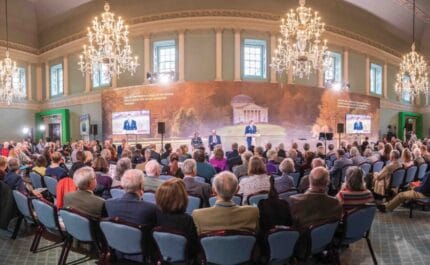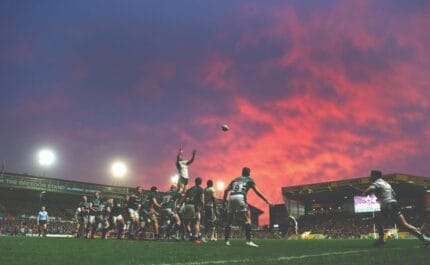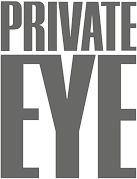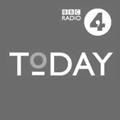North Korea: the nuclear options
Delayed Gratification’s James Montague was in North Korea to report on a football match when, on 3rd September, the country carried out its most powerful nuclear test to date. In DG #28 he explained what it was like being in a country that appeared to have just acquired an H-bomb, and looked back at the world’s last best chance of avoiding a nuclear North Korea
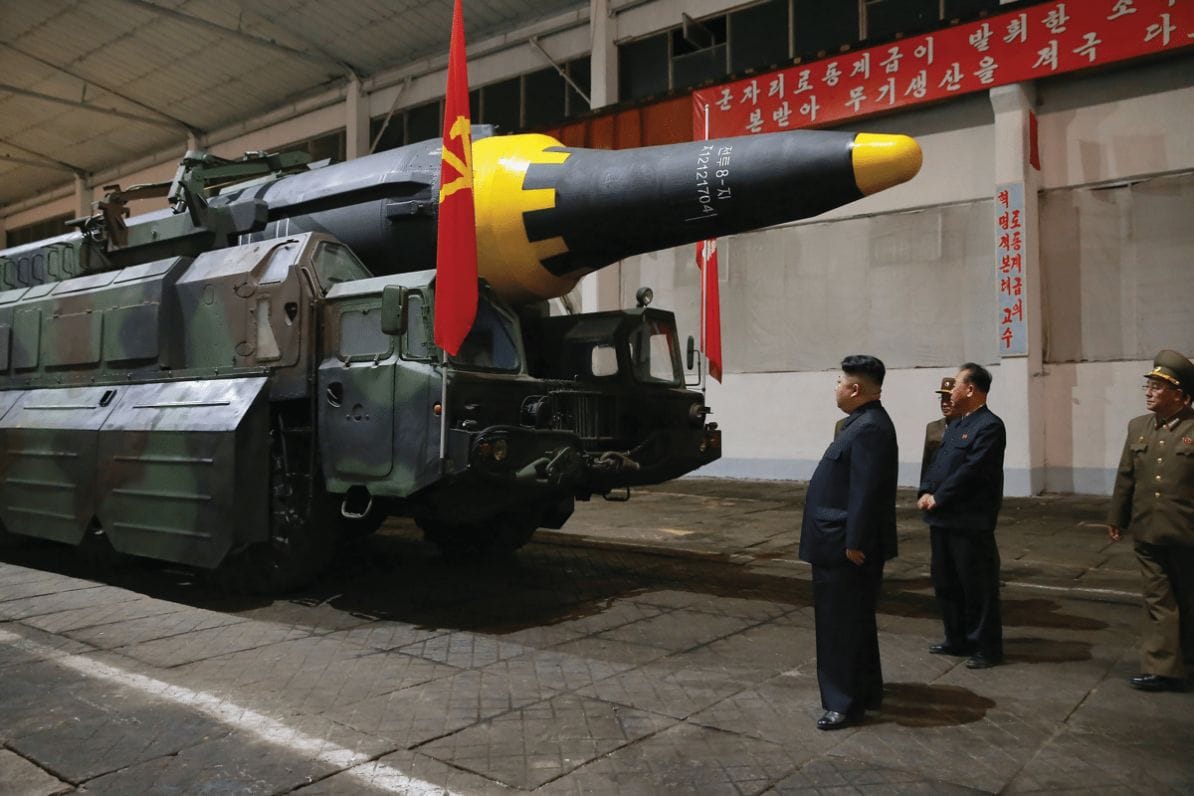
North Korean leader Kim Jong-un visiting a Korean People’s Army missile unit in an undisclosed location. Photo: Balkis Press / ABACA / PA Images
3rd September 2017 (Taken from: #28)
The line between the living and the dead at the Kumsusan Palace of the Sun is unexpectedly blurred. The complex, located in central Pyongyang, is often described as the holiest place in North Korea, a cross between a museum, a mausoleum and Mecca. It is dizzyingly vast. Once you pass through the reverentially quiet and beautifully landscaped gardens and their waterways filled with koi carp, you enter the huge palace to be met by dozens of soldiers and security officers.
There are a set of strict rules that must not be broken. A tie must be worn before you embark on the long journey along kilometres of marble corridors and slow-moving travelators. No electronic equipment, magnets or bank cards may be carried, and no photographs may be taken. Dust, too, is on the prohibited list. Rows of machines blowing sharp columns of air blast each visitor clean as they pass through into the inner sanctum.
Groups of women dressed in colourful traditional dresses float past in formation, followed by neat lines of men in identical shirts and ties, waiting for their moment to enter. All have red badges pinned to their chests. Most bear the face of the Great Leader, Kim Il-sung. Others wear the badge of the Dear Leader, Kim Jong-il, his son and heir, who died in 2011.
One by one they troop through to a darkened room, where Kim Il-sung lies in state, preserved in his moment of death and enshrined in a glass sarcophagus illuminated by white and red lights. This building was once his official residence but after his death in 1994 it became his tomb – and a place of pilgrimage. The country’s constitution was changed in 1998 to declare him the Eternal Leader, a kind of president in perpetuity, a status anchored by the quasi-religious state ideology of Juche which he formulated and which is still the guiding principle of the Democratic People’s Republic of Korea (DPRK).

Kumsusan Palace of the Sun, Pyongyang. Photo: Wikimedia Commons / Mark Scott Johnson
On Sunday 3rd September, I made my own pilgrimage to see the father of North Korea. Nominally I was in North Korea to write about a big football match between Lebanon and North Korea taking place in two days’ time. But my guides – and there are always guides everywhere you go – had arranged a trip to some of Pyongyang’s sites for me, Kumsusan first amongst them. Unbeknown to me, 600 kilometres north, a far bigger tribute to Kim Il-sung’s everlasting regime was being prepared in the Punggye-ri military testing site, a network of tunnels below Mount Mantap.
The room next door to Kim Il-sung’s mausoleum is filled with trophies presented to the Great Leader, which tell the story of modern North Korea. The walls are lined with a Who’s Who of 20th century communism: pictures of Kim Il-sung warmly shaking hands with Fidel Castro, Josep Broz Tito, Nicolae Ceausescu, Erich Honecker, Stalin and Mao Zedong. There are gifts related to his successful guerrilla campaign against Japanese imperial control and to his founding of North Korea after World War II. There are tokens marking the country’s subsequent invasion of the rest of the Korean peninsula in 1950, which sparked the Korean War and led to the loss of hundreds of thousands of lives. Finally, there are mementoes relating to North Korea’s emergence as a nuclear power.
And in the middle of the prizes and statues, the fawning letters and questionable diplomas, an unmistakeable face stares back, incongruously, from the jumble. It is William Jefferson Clinton, cast in bronze on a presidential inauguration medal. The US has been minting inauguration medals since the 18th century, and they are usually given to those who attend the ceremony. Kim Il-sung, then in his early eighties, was not in Washington DC in January 1993 to see Clinton appointed president after beating George HW Bush in the previous November’s election. Yet the medal somehow found its way here, to Pyongyang.
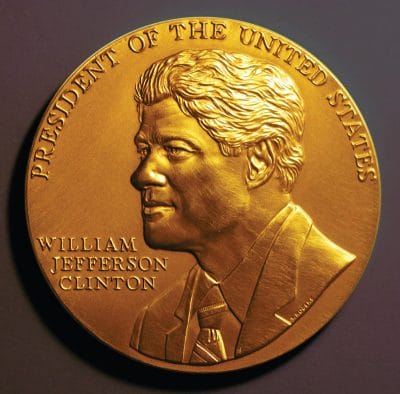
With President Trump in the White House, Kim Jong-un – the Great Leader’s grandson – now in charge and North Korea officially recognised as a nuclear power, relations between the US and North Korea are at their lowest ebb. It is unlikely that a Trump inauguration medal will ever make its way to the Kumsusan Palace. But back in 1993, with the inauguration of Bill Clinton taking place amid another North Korean nuclear crisis, there was still hope that the nuclearisation of the Korean peninsular could be prevented.
That period, between the start of Clinton’s first term as president and the end of his second in 2001 was, according to Professor Han S Park, an academic who was instrumental in several peace missions to Pyongyang in the 1990s, “the last chance to stop North Korea becoming a nuclear power”.
In the early 1990s North Korea’s economy was in dire straits. After the ruinous Korean War ceased in 1953 – although it has never officially ended, as no peace treaty was signed – North and South were once again divided along the 38th parallel. Surprisingly, in the decades after the war it was the North that enjoyed the higher living standards. The South was ruled by a series of stifling US-backed dictatorships, while the North was heavily subsidised by its allies the Soviet Union and the People’s Republic of China.
But the good times didn’t last. The Soviet Union collapsed, its subsidies to Pyongyang ended and a series of severe droughts left North Korea unable to feed itself. A crippling famine gripped the country in the early 1990s, stunting its citizens’ growth and leaving as many as 2.5 million dead. As Madeleine Albright, who was Clinton’s UN ambassador at the time, wrote in her memoir, Kim Il-sung “grew obsessed, near the end of his life, with developing a nuclear arsenal. This ambition may have been hastened by his country’s rapid economic decline resulting from the Cold War’s end.”

Propaganda posters on the northern side of the Korean Demilitarized Zone, September 2017. Photo: James Montague
North Korea had signed the Nuclear Non-Proliferation Treaty in 1985 and had reached a safeguard agreement with the International Atomic Energy Agency (IAEA) in 1991, which would allow the body to make sure that they were not diverting nuclear material to make weapons. But it became the first country to leave both agreements, in 1993 and 1994 respectively. The IAEA had found discrepancies when visiting North Korean nuclear sites, and feared that the regime was weaponising its plutonium.
The CIA estimated that as much as 12kg of plutonium had been extracted, enough for at least two nuclear bombs, maybe more. The US threatened sanctions. North Korea threatened to turn South Korea’s capital city, Seoul – which is just 40 miles from the Demilitarized Zone (DMZ), the no-man’s land boundary that separates the two – into “a sea of fire”.
With tensions rising, Professor Park, an expert on Korean politics, floated the idea in Washington DC policy circles of sending his friend, former US president Jimmy Carter, to Pyongyang to try to defuse the situation. The Carter Center had been involved in conflict-resolution missions before and had been invited to Pyongyang on several occasions. But the Clinton administration had always refused to let delegations go. As Mitchell Lerner, associate editor of the Journal of American-East Asian Relations, wrote of that time: “Some [Clinton] administration officials… worried that the ex-president was a bit of a loose cannon who could not be trusted to act within the larger diplomatic framework that the administration had implemented.”
But the gravity of the situation was such that on this occasion Clinton approved the trip, as long as Carter went as a private citizen and not in an official US capacity. “Kim Il-sung and [Bill] Clinton at that time were in serious disagreement and Clinton was contemplating military force against Kim if he continued with the nuclear programme,” recalls Professor Park. “So I spoke to Jimmy Carter. I was the organiser of the trip.”
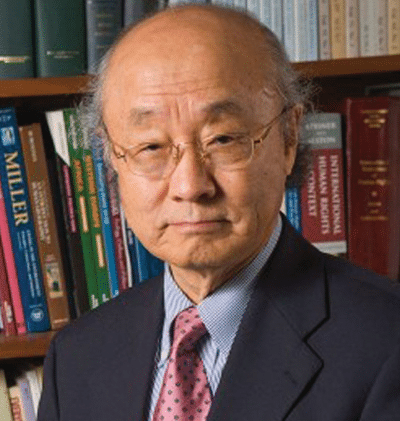
Professor Han S Park. Photo: University of Georgia
Park believed that North Korea’s situation was unique as it had indigenous expertise and materials which meant it could still achieve its goals even under sanctions. The impasse would only be resolved, he believed, by treating North Korea as an equal partner and offering economic incentives. “I thought that Kim Il-sung could be persuaded,” says Park. He was right. Carter flew into Pyongyang in June 1994 and during a boat trip down the Taedong River, Kim Il-sung agreed to allow IAEA inspectors to return to North Korea if the US and South Korea gave his country light-water reactors for nuclear power generation.
Not everyone in Washington was happy with the deal. Some felt that Carter had gone too far when he held a press conference as soon as he left Pyongyang, hoping to pressure the US into agreeing to the terms he’d negotiated. “Jimmy Carter and Bill Clinton’s White House agreed that Carter wouldn’t reveal the outcome of negotiations in Pyongyang but Jimmy was so anxious,” recalls Park. “I said he shouldn’t, but as soon as he went to Beijing [on the way home] he held a press conference. He was so excited that he’d persuaded Kim Il-sung. The Clinton White House was angry and there was some friction.”
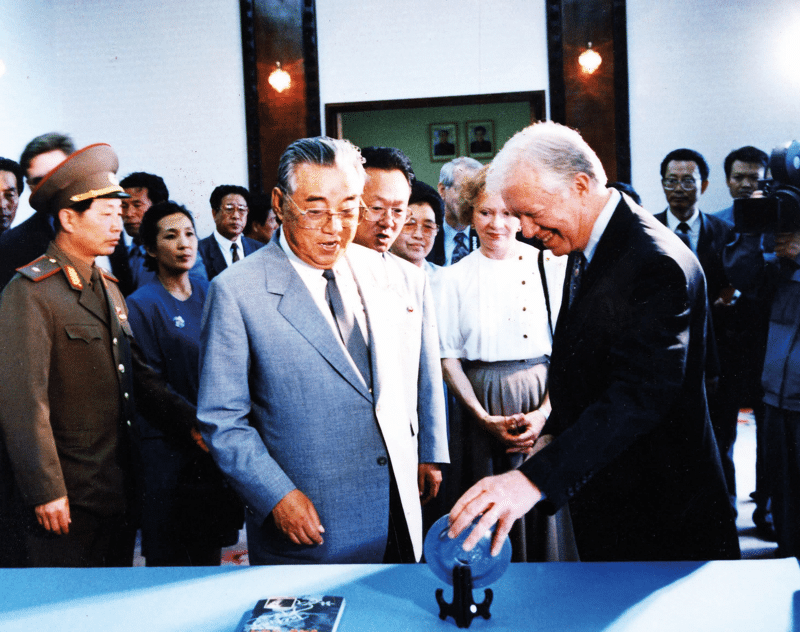
North Korean president Kim Il-sung with former US president Jimmy Carter in Pyongyang, North Korea, 16th June 1994. Photo: The Carter Center
A month after Carter’s trip, Kim Il-sung died of a heart attack and the negotiations were left to his son and heir Kim Jong-il, who was far more aggressive. Nonetheless, agreement was reached, and an agreed framework was signed in Geneva on 21st October 1994 which would put a brake on North Korea’s nuclear weapons programme.
“The 1994 deal forestalled a US attack on North Korean facilities that could have led to a wider war,” says Christopher Green, a Korea expert at Leiden University in the Netherlands. “To me that is positive, but to some others it was a failure as it merely delayed the forcible denuclearisation of the DPRK.” Still, the deal was unique in the way it constrained North Korea. “The deal greatly delayed North Korea’s development of the capacity to fully nuclearise over a period of nearly a decade,” adds Green. “That is something which no other process – diplomatic, economic or military – has come close to achieving.”
The death of Kim Il-sung, though, made honouring the deal much harder and the US and North Korea spent much of the next seven years playing a cat-and-mouse game over its implementation. “Jimmy Carter wasn’t hoodwinked by Kim Il-sung, and it wasn’t a smokescreen,” believes Green. “But Carter did perhaps make the deal with the wrong Kim…”
At the Kumsusan Palace Kim Jong-il’s body lies in a room of the exact same proportions as that in which his father rests. The same number of guards ring its perimeter and the same reverence is demanded. Each visitor is watched to make sure that their bows are of sufficient depth, and held for long enough to show sufficient respect. We were expected to bow three times: at Kim Jong-il’s feet and both sides, but never at his head, which is still covered in a large shock of black hair: bowing at the head is deemed offensive in Korean culture.
Kim Il-sung was a very sincere man and a man of dignity… a philosopher and soldier. His son wasn’t quite that” — Han S Park
Unlike his father, who had cut his teeth as a guerrilla leader and was internationally respected, albeit often grudgingly, Kim Jong-il was an unknown quantity when he came to power and a rare case of communist succession kept within the family. A cult had been built around the Kim family by his father, who had also invented the ideology of Juche, a kind of mystical existentialism that mixed self-reliance with extreme nationalism. Kim Jong-il, the official history says, was born on Paektu mountain near the Chinese border, although it was likely he was actually born in Russia while his family was in exile in 1941. “Kim Il-sung was a very sincere man and a man of dignity, a trustworthy person, a philosopher and soldier,” says Park. “His son wasn’t quite that.”
Kim Jong-il was seen as something of a dilettante – a film obsessive who was allegedly the mastermind behind the 1978 kidnapping of his favourite South Korean director, Shin Sang-ok, and actress Choi Eun-hee. He forced the pair, who were married but estranged at the time, to make films for the regime before both escaped to the US embassy in Vienna eight years later. South Korean intelligence also believe that Kim Jong-il was the guiding hand behind the Korean Air 858 bombing in 1987 which killed all 115 people on board and was seen as an attempt to disrupt the Summer Olympics taking place in Seoul the next year.
Unlike his father’s heaving trophy cabinet at Kumsusan, which includes the Bill Clinton inauguration medal, the room adjacent to Kim Jong-il’s body tells the story of the country’s increasing isolation. There are few pictures of visiting statesmen. The most recognisable figures featured are Robert Mugabe and Ali Bongo Ondimba of Gabon. There’s a paucity of awards or statues. So much so that one award in particular is given pride of place: the International Kim Il-sung Prize Certificate, “Awarded for the distinguished contribution to the sacred cause of independence and peace on the globe through application of the Great Juche Idea.”
North Korea remained poor and isolated as the 1994 agreed framework faltered. The light-water nuclear reactors were delayed. But there was renewed hope that peace could be achieved between North and South after the election of South Korean president Kim Dae-jung in 1997. Dae-jung had spent time in jail for his pro- democracy policies. The then-US secretary of state Madeleine Albright believed Dae-jung to be a man of similar stature to Vaclav Havel and Nelson Mandela. “No one could argue with greater credibility than Kim [Dae-jung] that democracy and respect for human rights were compatible with Asian values,” she wrote.

North Korean leader Kim Jong-il toasts US secretary of state Madeleine Albright at a dinner in Pyongyang, 24th October 2000. Photo: stock.adobe.com
Dae-jung instituted a new “sunshine policy” with the North and made an unprecedented trip to Pyongyang in June 2000 to meet Kim Jong-il. Albright saw an opportunity to finally end the development of nuclear weapons on the Korean peninsula. The North Koreans had extended an invitation to Clinton himself but it was his secretary of state who was dispatched in October 2000, along with Professor Park and a team of mediators.
On the trip, Albright recalled, Kim Jong-il offered far deeper concessions on North Korea’s nuclear programme than they had expected. He was candid about his country’s economic state and spoke about how he wanted to build a society similar to that of Sweden. Albright wrote that Kim Jong-il had told her that “there were a lot of misunderstandings between us. For example, we [in North Korea] did not educate our children right. Our children were taught to call your countrymen ‘American bastards’ instead of just ‘American’.”
Clinton was invited to visit, but his time was limited. It was November 2000 and the US presidential election was taking place. Dae-jung urged Clinton to come in person to get the deal over the finishing line but, preoccupied by domestic affairs, Clinton declined. And then George W Bush won a shock election victory against Clinton’s vice president, Al Gore, and all bets were off.
Nothing worked after Bush’s Axis of Evil pronouncement” — Han S Park
“That really was the last chance,” says Park. Over the next year the incoming Republican administration took a hardline approach against North Korea. An accusation was levelled that uranium was again being enriched, and when Bush included North Korea in his famous “Axis of Evil” speech on 29th January 2002, the agreed framework was dead. “After that Kim Jong-il successfully put together and manufactured a nuclear bomb,” says Park. On 9th October 2006 Pyongyang tested its first nuclear weapon. “Had Gore been elected things would be different,” believes Park. “Even Albright assumed Al Gore would win the election. There was an informal road map but nothing worked after Bush’s Axis of Evil pronouncement.”
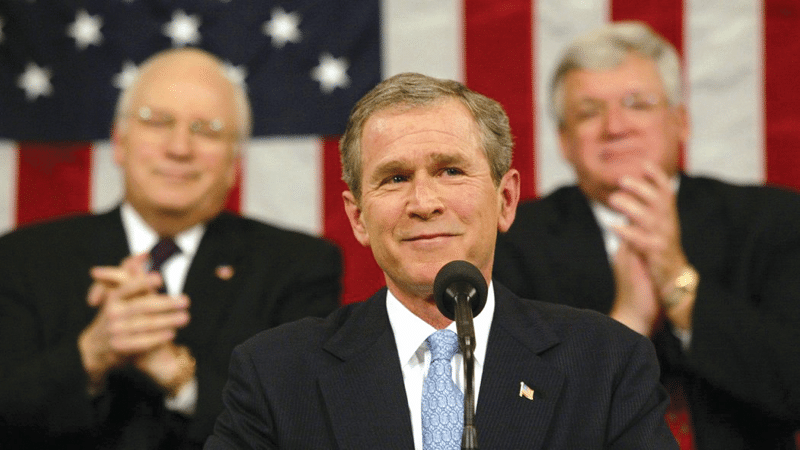
Had Gore been elected things would have been different… “Nothing worked after Bush’s Axis of Evil pronouncement” – Han S Park. Photo: Photo: Reuters / Reuters Photographer
The news of North Korea’s sixth and biggest nuclear test on 3rd September arrived not via local TV or celebrations in the street but from a New York Times push alert. Once I had regained my possessions at the entrance of the Kumsusan Palace of the Sun and turned on my phone, the message arrived. A 6.3 strong earthquake that had just been recorded in the north of the country, at the same spot of the Punggye-ri nuclear test site. It turned out to be a test of North Korea’s largest nuclear bomb to date, which experts would later assess to be the country’s first H-bomb. The detonation had taken place at midday, at almost the exact moment I was standing in front of Kim Il-sung’s embalmed body.
While the internet is off limits for North Koreans – they have their own heavily restricted intranet – visitors can buy a 3G sim card from the airport for $200. Unlike in China, Google, Facebook, Twitter and the New York Times don’t appear to be blocked. Still, North Koreans would not know about the great nuclear leap forward until later that evening when the famed North Korean newsreader Ri Chun-hee, known as the ‘Lady in Pink’, emotionally broke the news on TV. A parade was held on Kim Il-sung Square as fireworks exploded in the sky.
Since Kim Jong-il was replaced by his youngest son, Kim Jong-un, in 2011, North Korea’s nuclear and missile programmes have been significantly accelerated. While building up his arsenal, Kim Jong-un has also been clamping down on his people in a bid to secure his grip on power. Defectors have relayed stories of the public execution of members of the party elite, generals and other power rivals who have been purged in the most gruesome manner, sometimes by being tied to the muzzle of an anti-aircraft gun and reduced to a red mist. Others have told stories of vast concentration camps – as well as arbitrary torture and human experimentation on those accused of political crimes. And, they say, it’s not just dissenters being imprisoned, but their children too. Punishment, like government, is hereditary in North Korea.
Some, like Antonio Razzi, a flamboyant Italian senator who claims to be a close friend of Kim Jong-un and regularly travels to Pyongyang, believe that the world has underestimated North Korea’s young leader. “The West has not ‘misunderstood’ Kim but has simply chosen not to seek any way to establish a dialogue,” he says. “Everyone is waiting for Kim Jong-un’s repentance, saying he wants to deal. It will not happen. It is the West which has to come forward. Immediately. I’ve been saying this for years.”
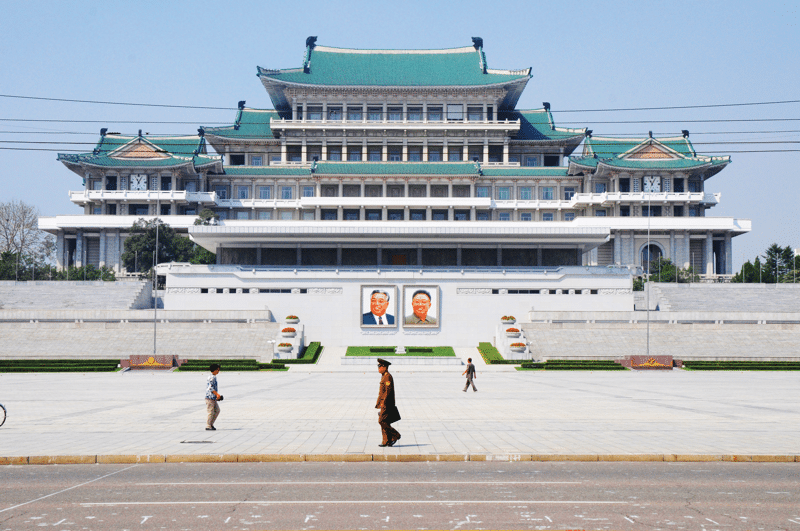
Kim Il-sung Square, Pyongyang, September 2017. Photo: James Montague
Later I travelled south to the DMZ with my minders: no one is allowed in or out of Pyongyang without permission. Past the checkpoint, there wasn’t a single car other than ours on the three-hour drive across potholed roads to the border. Speakers blast crackly North Korean propaganda at ear-splitting volume over the DMZ and the South replies in kind. A military guide in full uniform was giving a group of Chinese tourists a tour of the complex, and explaining North Korea’s version of its history, including the key fact that it was the “American incompetents” who started the war, which the North won. He was friendly and, through an interpreter, asked me who I thought started the “Fatherland Liberation War” as it is known in North Korea. Midway through my diplomatic reply, my minder interrupted. “He doesn’t want to hear that, he wants to hear: ‘America’.” The minder gave a translated answer that was deemed politically acceptable. The soldier smiled, nodded and continued giving his the tour of the most heavily armed place on the planet.
Despite the failed diplomatic attempts of the 1990s, Professor Park – who admits like almost every Korea expert that few can guess what Kim Jong-un will do next – is still hopeful that peace can be made because, he says, there isn’t really an alternative. “If the US military attacked North Korea, it would mean a lot of South Korean casualties,” he says. “Hundreds of thousands of people in Seoul would perish. I want to do something directly to stop that.”
The focus of his approach has now shifted. For Park the time for denuclearisation has passed. North Korea is a nuclear power and should be treated as such. In a sense, their policy has been a success. They are now feared and being taken seriously. “Put yourself in North Korea’s mind: they have been exceedingly rational in promoting their interests,” he says. “The US has been wishy-washy.” The toppling of dictatorial regimes in Iraq and Libya has only deepened the belief among the Kim family that nuclear weapons afford protection from being lynched in the street. “We waited too long. North Korea is a nuclear power. It will never give it up,” says Park. “We have to accept it as a nuclear state. The best we can work for is global non-proliferation.”
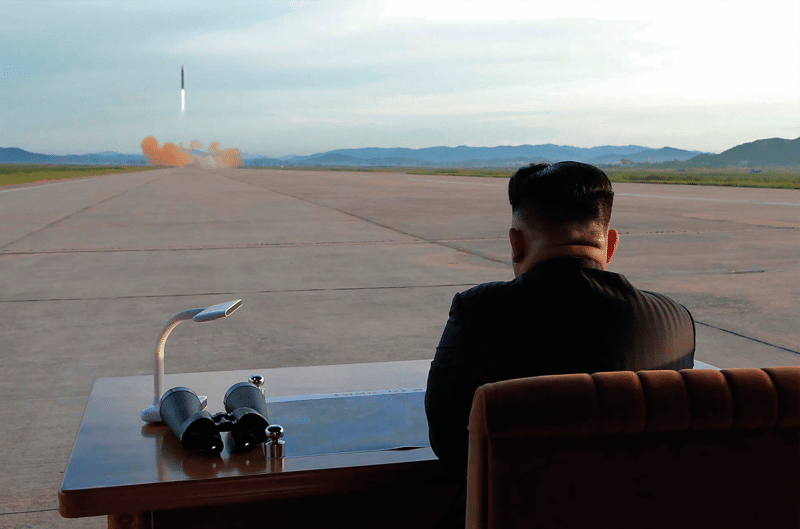
North Korean leader Kim Jong-un watches the launch of a Hwasong-12 missile in this image released by the Korean Central News Agency, 16th September 2017. Photo: KCNA
One mystery remains. How did Bill Clinton’s inauguration medal end up in a room next to Kim Il-sung’s embalmed body? The Special Collections Research Center at the George Washington University, which has the most complete collection of presidential medals in the world, didn’t know. Perhaps it was purchased by someone and brought to North Korea. A 1993 Bill Clinton medal goes for under $50 these days. The most obvious answer would seem to be that Jimmy Carter took it with him during the 1994 visit. But Park denies that’s the case. “Jimmy Carter would not have taken that to Pyongyang and presented it,” without Clinton’s permission, he says. However it got there, it remains the only object connected to the US government that is displayed proudly at the Kumsusan Palace of the Sun, a relic of a time when the unthinkable could still be prevented from coming to pass.
Slow Journalism in your inbox, plus infographics, offers and more: sign up for the free DG newsletter. Sign me up
Thanks for signing up.
